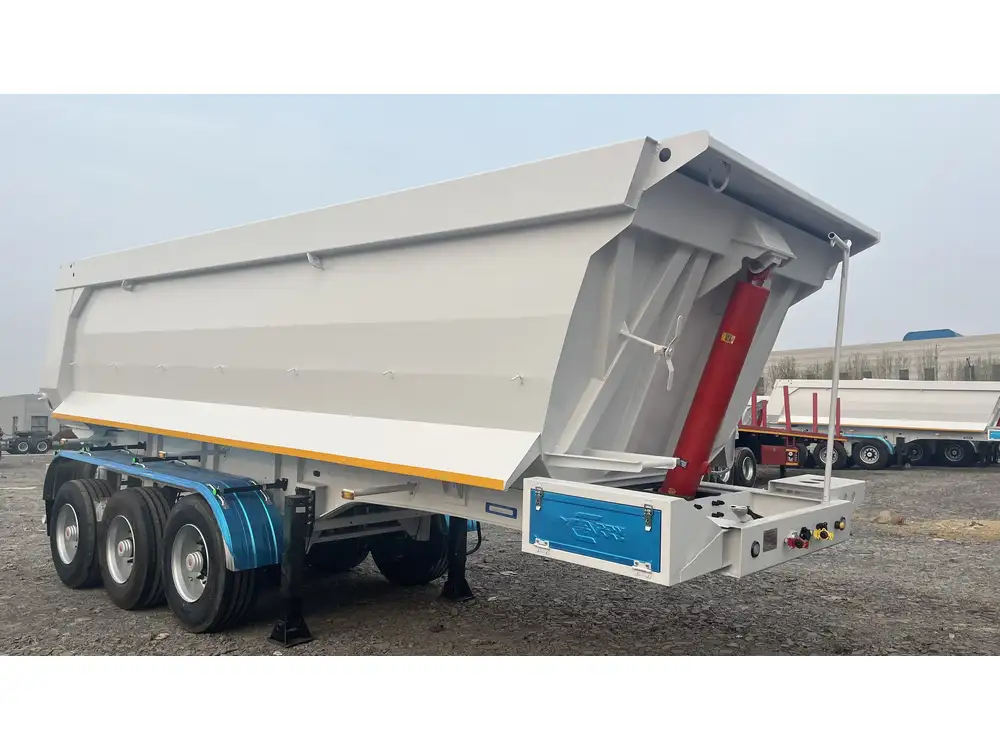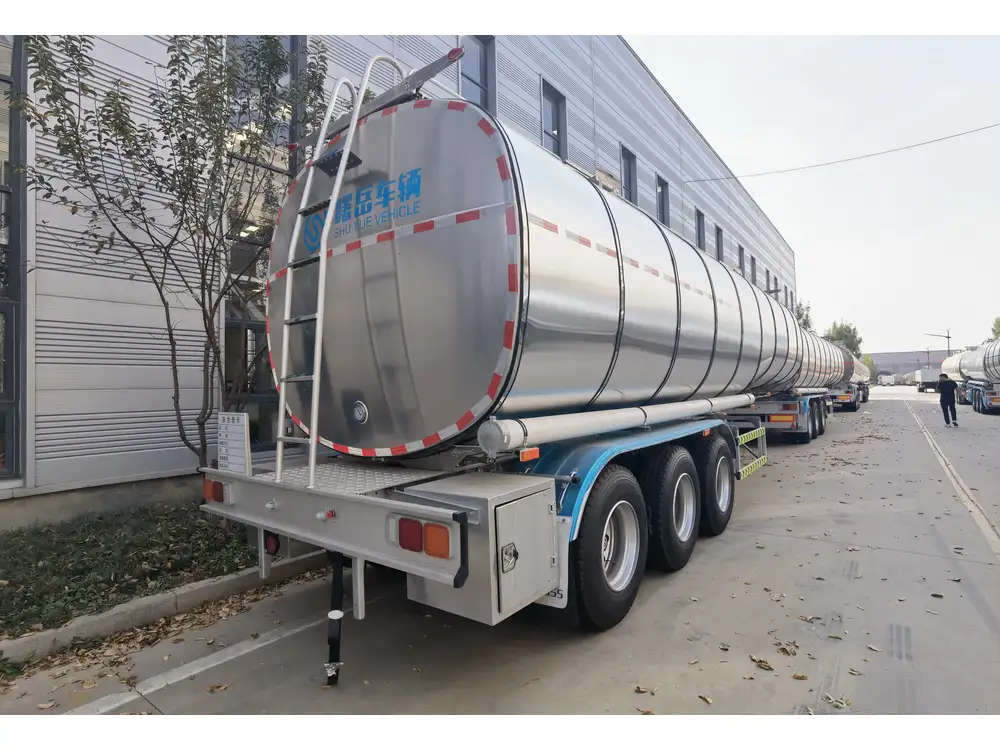Semi-trailers serve as vital components in the logistics and transportation industries, facilitating the movement of goods across vast distances. As manufacturers, shippers, and operators delve deeper into the world of semi-trailers, an essential question arises: How many feet wide is a semi-trailer? This inquiry covers various specifications and considerations that can affect performance, legality, and usability in different contexts.
Standard Width of Semi-Trailers
Most semi-trailers adhere to regulations set forth by transportation authorities. In the United States, the typical width for standard semi-trailers falls within 8.5 feet (102 inches). This measurement is crucial, as it aligns with the Federal Highway Administration (FHWA) regulations which establish maximum dimensions for commercial vehicles.
- Legal Width: The standard width of 8.5 feet ensures compatibility with most roadways and bridges, minimizing the risk of accidents or damage due to oversize loads.
- Measurement Standards: Width includes any appendages such as mirrors and lights; thus, trailers exceeding 8.5 feet may require special permits.
Why the 8.5 Feet Width?
The designation of 8.5 feet as the standard width is rooted in practical considerations:
| Reason | Description |
|---|---|
| Road Compatibility | Designed to fit within standard lanes while maintaining safety and operational efficiency. |
| Industry Compliance | Aligns with regulations across most states, providing uniformity and predictability. |
| Construction Balance | Balances cargo capacity with structural integrity, preventing unnecessary strain on materials. |

Variability in Semi-Trailer Widths
While 8.5 feet is the standard width for most semi-trailers, several specialized trailers exist. These neither conform to conventional standards nor are categorized strictly. Understanding these variations allows for informed decisions based on operational needs.
Types of Specialized Semi-Trailers
Flatbed Trailers: Commonly used for transporting heavy and oversized goods, flatbeds may extend up to 8.6 feet wide in some configurations.
Reefer Trailers: Refrigerated trailers often remain at the standard width; however, dual-temperature configurations for perishables may require slight expansions.
Wide Load Trailers: In scenarios where particularly bulky cargo is transported, operators might utilize wide-load permits. These trailers can exceed the standard width to carry oversized goods legally.
Here’s a comparative summary of trailer widths:
| Trailer Type | Standard Width | Typical Use Case |
|---|---|---|
| Standard Semi-Trailer | 8.5 feet (102 in.) | General freight |
| Wide Load Semi-Trailer | Varied (Up to 12 ft.) | Oversized cargo transportation |
| Flatbed Semi-Trailer | 8.6 feet (103 in.) | Construction materials, heavy machinery |
| Reefer Semi-Trailer | 8.5 feet (102 in.) | Perishable goods requiring temperature control |
Factors Influencing Semi-Trailer Width and Regulations
Understanding the impact of width on operational functionality is key for owners and operators. Complying with width regulations entails understanding pertinent factors such as:

Weight Limits
Federal and state regulations dictate maximum weight limits, which can impact trailer width. Notably, wider trailers may be designed to support heavier loads, thus influencing density and weight distribution.
Trailer Configuration
The type of cargo dictates configuration. A specialized design may affect the appropriate trailer width, increasing or necessitating adherence to regulations for transport.
State-Specific Regulations
Different states may impose regulations that vary from federal standards. Therefore, it’s prudent for operators to verify with local authorities concerning semi-trailer width limitations or exceptions.

Implications of Width on Performance
Operating a semi-trailer with attention to width has far-reaching implications, affecting everything from handling and safety to fuel efficiency. Let’s explore:
Maneuverability
With an increase in width, maneuverability often decreases. Wider trailers may require broader turns, impacting urban deliveries or locations with tight constraints.
Fuel Efficiency
Wider trailers present more surface area, potentially increasing drag during transit. Understanding this relationship can inform operational costs and route planning.

Structural Stability
The width influences the trailer’s structural integrity. Manufacturers typically design wider trailers with reinforced frames to withstand greater stress under heavy loads.
Legal Considerations and Permitting
For operators interested in wider or specialized semi-trailers, legal implications must be carefully navigated. Knowing the limits and regulations can prevent delays and fines.
Obtaining Special Permits
When seeking to use wider semi-trailers, it’s crucial to understand how to obtain the proper permits.
- Cost Implications: The cost associated with permits can vary significantly by state and type of width.
- Timeframe for Approval: Permitting can take time; thus, planning and early communication with local transport authorities are essential.

Key Considerations:
| Aspect | Details |
|---|---|
| Permit Costs | Can range from $10 to several hundred dollars |
| Processing Times | Varies, typically 48 hours to several weeks |
| Renewal Requirements | Often annually or depending on the type of load transported |
Enhancing Your Knowledge About Semi-Trailer Width
Given the intricate nature of semi-trailer specifications, understanding these factors is essential for all stakeholders:
Regular Training: Truck drivers must be adequately trained concerning the widths of trailers they operate, emphasizing safety and compliance.
Informational Resources: Leveraging resources such as industry publications, seminars, and online courses can keep operators abreast of changes in regulations or efficiencies associated with trailer width.
Networking: Engaging in professional communities allows for sharing insights and best practices regarding semi-trailer operations.
Conclusion: Strategic Planning for Semi-Trailer Width
In summary, knowing the width of semi-trailers is foundational to optimizing logistics operations. With the standard width predominantly set at 8.5 feet, various trailer types and state-specific considerations create a tapestry of requirements demanding attention.
Whether you’re a manufacturer, an operator, or involved in logistics planning, understanding these dimensions can facilitate more effective planning and operations. Adhering to region-specific guidelines, optimizing performance based on width, and leveraging knowledge resources will enable better decision-making, ultimately enhancing operational success.

Frequently Asked Questions
What is the maximum width for a semi-trailer in the U.S.?
- The maximum legal width for a semi-trailer is generally 8.5 feet (102 inches) unless special permits are obtained for wider loads.
Are there exceptions to the standard width requirements?
- Yes, particularly in cases of oversized loads or specialized trailers. Operators must secure appropriate permits in such instances.
How does width affect fuel efficiency?
- Typically, wider trailers may experience increased air resistance or drag, potentially impacting fuel consumption rates.
Understanding the specifications surrounding semi-trailer width is integral to optimizing operational strategies. Adapting to these requirements ensures safe, efficient, and compliant transportation across varied terrains and jurisdictions.



